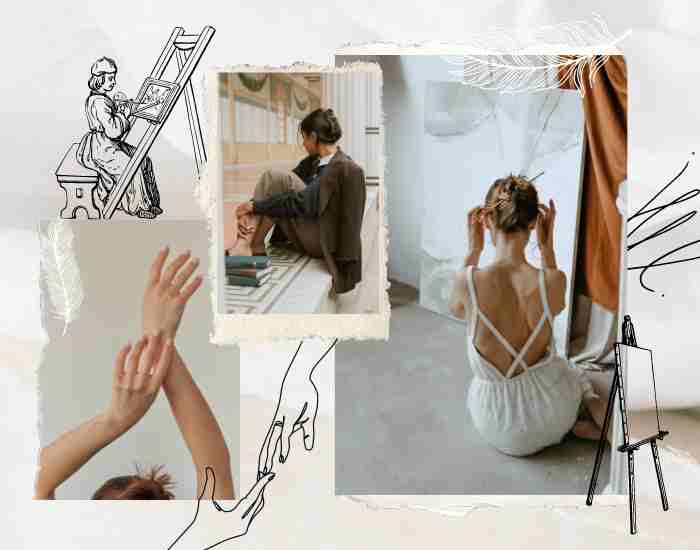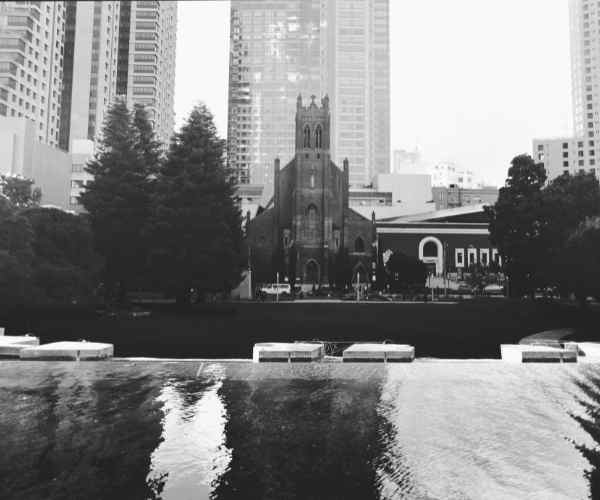The idea of ‘less is more’ makes the core of Minimalism in Art. In a nutshell, this method is concentrated on achieving an extremely simple form of art which has its unadorned beauty.
Also, it is important to establish minimalism’s significance in the history of art since this is critical for understanding its impact on modern and contemporary art. Unlike other art styles in history, which are filled with intricacies and flamboyance, minimalism is a focal point that delves into simplicity with the emphasis of three main colors.
Such is the beauty of a minimalist work of art, behind its simplistic design lies super intricate concepts. The incorporation of geometric shapes and limited colors gives abstract pieces of art a lot of room to explore meaning behind them. For example, in minimalism, negative spaces in paintings bring out a more reflexive engagement with the art, making people realize how even simplicity can say a lot both emotionally and intellectually.

The Origins of Minimalism in Art
Historical Context
Minimalism responded to an abstractionist artist such as Mark Rothko in a more emotionally charged manner. During abstract expressionism, Rothko and Jackson Pollock resorted to using an array of colors alongside thick brushwork to draw out emotions. Over time minimalism came into this world with the sole goal to approach art in its face value by getting rid of the chaotic emotions and replacing it with simply art.
Along the definition of minimalism we can trace Suprematism and De Stijl to being predecessors. Suprematism, which was founded in the early 20th century by Kazimir Malevich, took a very transgression approach as it focused on a few geometric shapes and colors. Like Wise De Stijl made use of basic colors and created using geometric shapes which helped form the basis of minimalist ideas.
1960s marked the rise of minimalism and it’s importance, especially in New York City which is considered to be the heart of modern art. During this time art started to shift towards more minimalistic and simple forms. Pioneers like Frank Stella and Donald Judd came in strong with using industrial materials and geometric forms, this defied traditional norms of what art and aesthetics should be like.
The Initiators of Minimalism
Donald Judd is viewed as one of the pivotal figures in the art of minimalism. His sculptures are classified as such since he employs industrial materials and geometric shapes. His artworks including the “Untitled” series are based on simple and repetitive forms that put emphasis on the material and spatial aspects of the piece.
Frank Stella is best known for his black paintings and his shaped canvases that are classed as minimalist art. He makes paintings that are concerned with form and color by using harsh lines and geometric shapes to render these works. His paintings like “Black Stripe” are minimalistic in that they are indicative of the idea that a painting should be about the form only.
Agnes Martin is an important name as far as the minimalism art form is concerned. Her calm, grid like pictures show commitment to abstraction but also the need to express oneself. For example, her work Untitled #3 demonstrates the author’s philosophy of orderly serenity through a minimalist perspective which reminds people that even art with few elements can convey profound ideas.
Core Principles of Minimalist Art
Simplicity and reduction
The goal of Minimalist art is to achieve absolute purity of form by removing everything that is not essential. To such people, art is not intended to be complicated and rightly so as it aims to convey a message, therefore unnecessary visual artefacts should be avoided.
Artists such as Donald Judd and Agnes Martin demonstrate that geometric forms and restricted color ranges can create art that is both stunning and basic. Minimalism asserts that Judd’s industrial materials and Martin’s grid paintings employ few aspects to achieve strong visual and emotional effects.
In the genre of minimalist painting, negative space is a very important notion. Negative space can be defined as the space which surrounds a subject or subjects in an artwork and this space becomes almost as important as the subject in minimalist art. This focus softens the complexity of the picture and extends the viewer’s interaction with the most critical shapes. Studies conducted by the Museum of Modern Art (MoMA) show that in Minimalism’s use of negative space, the viewer is directed to concentrate on the sculpture and the composition of the piece.
Focus on form and color.
Minimism is characterized by the use of geometric shapes and clean lines. This is an antithesis of the Abstract Expressionism style of art where the artist would rely on dynamic brush strokes and colors to bring to life the emotion in the piece.
Most minimalist artwork narrows down to a few colors to maintain the emphasis on the shape of the piece. Frank Stella effectively demonstrates the concept of minimalism through his paintings “Black Stripe” and others where he keeps the color scheme simple and uses strong lines. Or how some sculptures or buildings can rely on the raw materials, weave, and shape itself to paint an oicture.
Art historians at Harvard Art Museums argue that the minimalistic view regards color and shape as secondary features. The style of minimalism is able to achieve structural integrity and, more importantly, the artist/author’s intention to provide directness and clarity to the viewer which in turn enables the viewer to appreciate the main features of the artwork without any distraction
Real-life Examples of Minimalist Art
Iconic Minimalist Pieces
”Untitled” by Donald Judd is a classic example of the minimalist concern for form and material. Judd’s pieces include industrial materials such as metal or plywood and arrange it in simple geometrical forms. This particular piece draws attention to Judd’s understanding of the minimalist principle , which is stripping art to its core elements by focusing on materials and the relationships formed in space around the artwork.
Frank Stella’s “Black Stripe” can be described as a left over of the Stella’s minimalist approach that began with dark lines and almost no colors. The painting employs a design that utilizes sharp linear angles with a single color combined with these angles to give a strong impression. This work emphasizes Stella’s attempt of contributing to the minimalist approach with form and color as the two primary instruments.
Minimalism in Contemporary Art
Current developments in minimalist art continue to grow and develop. Dan Flavin for example, has recently been exploring light installations as an art form. Flavin’s use of ordinary fluorescent lights takes the sculpture and illusive painting concepts in a new context. Such an approach expands the boundaries of minimalism hence creating a junction point of geometry and light movement.
The minimalist art movement remains a great influence in art today and goes beyond just the traditional forms. Its tenets have also changed modern living designs, performances, and even architecture through encouraging a minimalist way of life. A good example is contemporary interior design where minimalism principles are practiced. Simplicity, functional form and style are highly regarded.
Why Minimalism is Timeless
Feelings
One of the aspects of art and especially the work of minimalists, is that it can be very rhythmic, and even serene. This is mostly due to the simplification of the artwork, enabling the viewer to experience it on a more personal level, directed at the core of the piece rather than the piece as a whole.
A good minimalist painting for example does not have a lot or dense visual detail, since it requires a stronger emotional response and engagement with the piece. One great example is the grid-like paintings made by Agnes Martin, which portray a more peaceful environment that allows people to express their feelings or thoughts. Research done at the University of California, Berkeley, suggests that people perform better and feel better when surrounded by cleaner, non-distracting art or spaces, as it reduces stress and anxiety enabling more focus on important aspects.
Cultural Influence
Cultural influence is two-way, culture shapes people and vice versa. It goes without saying that ‘minimalism’ as a distinct approach coined by the Gardner museum in Boston has left its mark deep into the outer world other than art to encompass fashion, architecture, and interior decor. In these given areas, the principles underlying the designs such as functional and simplicity are put to use generously . For example the architectural works of Tadao Ando illustrate admirable examples of how space can be made functional through an intelligent and yet understated minimalist design.
Moreover, the movement advocates for a way of life that is devoid of too much clutter appreciating neatness and simplicity in everything, a life that is commonplace but helpful for one to operate. There are a few studies published in Environmental Psychology where it has been shown that clean environments as advocated by the movement help in lowering the stress and aid in enhancing the quality of life which again reaffirms their assertion that less is more.
Frequently Asked Questions
What is the main idea behind minimalism in art?
In conclusion, less is European; ‘less is more’ is a central concept to ‘minimalism’ as an ideology. The goal of the minimalist is to maintain most impact through a limited amount of constituents, being faithful to the central purpose of the art. So, it focuses on the basic and most necessary structures, enabling content to do its work with the least aids. A research done by the Tate Modern has shown that minimalist art eliminates unnecessary embellishments and showcases what the subject is all about: its form and material.
What were the origins of minimalism in art?
According to the Moholy Nagy entry in the Art Institute of Chicago, the roots of minimalism can be traced back to artists who practiced expressionism style. It can also be associated with the antithesis of abstract expressionism. It however differs from art trends like suprematism and de stijl that is focused on simplism as its only approach. MoMA traces its origins to Chicago artists who utilized fundamental shapes and a reduced color palette during the late 1950s up until mid 60’s.
Which artists contributed majorly towards minimalism?
They include Donald Judd famed for his work in sculpture that featured geometric shapes and industrial materials, Frank Stella who is famous for his black paintings and Agnes Martin who painted grid-based work. These three artists single-handedly spearheaded the movement and showcased their works in numerous exhibitions and retrospectives, especially at the Solomon R. Guggenheim Museum.
How did Minimalism become popular in today’s world?
Today’s world thrives in the rapid growth of technology which has led art, design and lifestyle to progress as well. Minimalism captures people through its principle of simplicity and being straightforward. This leads us into the principle that minimalism has realistic functionality as working conditions that are more psychological pleasing and distraction free lead to more efficient work performance hence improving one’s mental life quality.
Conclusion
As for the modern-day approach, minimalism appreciates exquisite simple things which assert that less is more. This paper has shown the history of minimalism as an movement reacting to American abstract expressionism and as a movement which has and still is shaping narrative and practices in art, design, and lifestyle. This is due to anti-formal approach that allows artists and viewers to create their own meaningful connections through imagery in which forms are subordinated to in the hope of reducing the overall impact.
References
- Notable minimalist artworks and artists: Donald Judd, Frank Stella, and Agnes Martin.
- Historical sources on the evolution of minimalism and its impact on art and design come from institutions such as MoMA and the Solomon R. Guggenheim Museum.
More Post
- Abstract Adventures: Breaking Down Abstract Art
- How do Classic Art and Architecture Shape Modern Masterpieces? Reviving Renaissance Techniques
- How Creative Expression Enhances Mental Health? Art Therapy for Emotional Healing
- How do Painting and Photography Influence Each Other? “The Art of Blending
- How Urban Landscapes Inspire Modern Art?(Exploring Cityscapes and Skylines)





